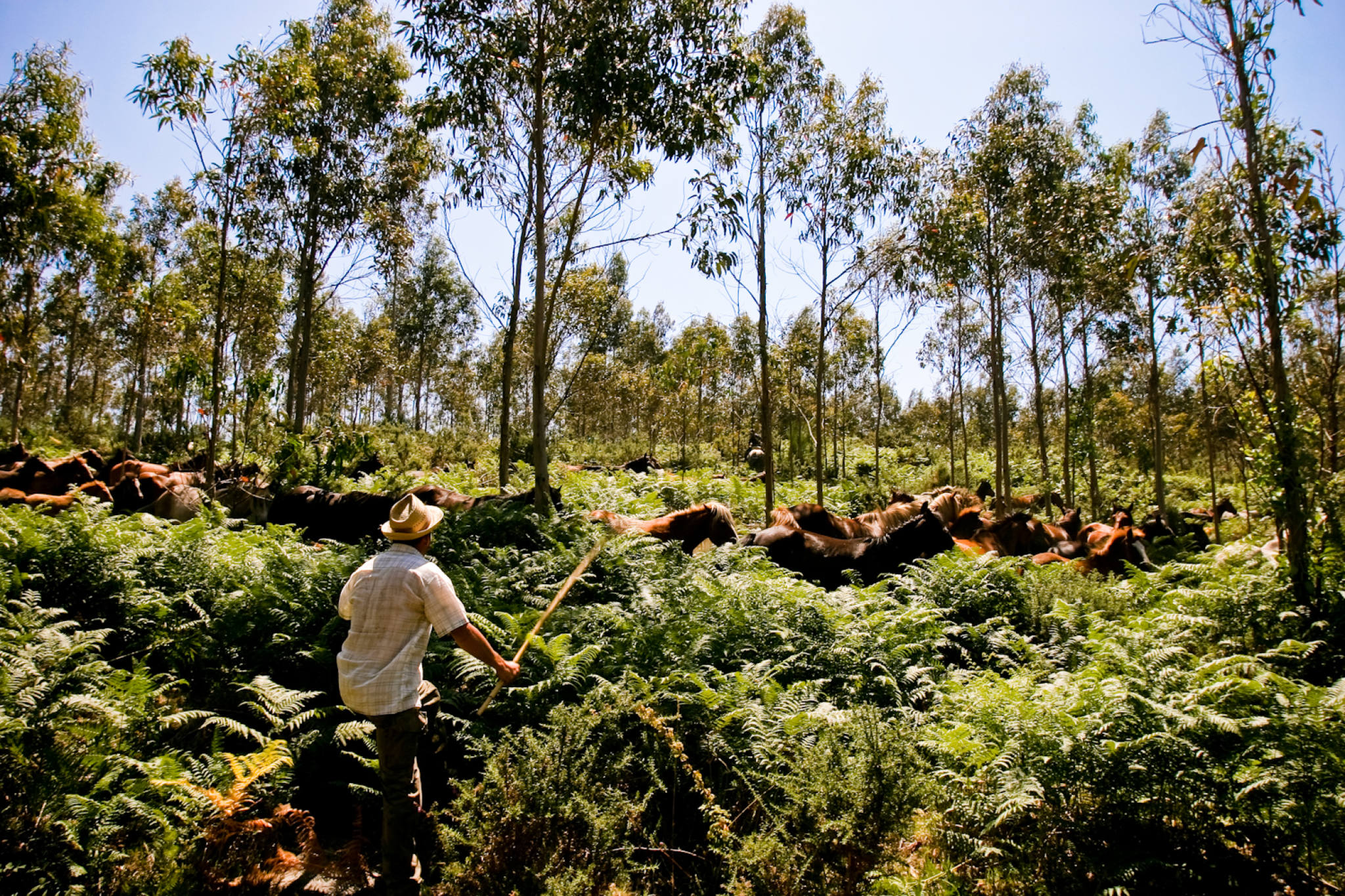- Alaska →
A Rapa Das Bestas
Year
Download
Share
Throughout the year, residents of small towns throughout Galicia, Spain go to the mountains and gather wild horses for the Rapa das Bestas. These centuries-old events – where horses’ manes and tales are trimmed – evolved from a tradition of caring for the animals and keeping them cool in the summer. Legend has it that all the wild horses are descended from two that were released as a gift of thanks to Saint Lorenzo in the sixteenth century. Now, hundreds of villagers and visitors alike come to annual Rapa celebrations throughout the summer. This story was part of an international multimedia project in Santiago de Compostela, Spain, completed in 2005 called, The Ancient Way.
001-beast1980.jpg
Visitors to the annual Rapa das Bestas see the action and enjoy the carnival atmosphere. In 2005 more than 4,000 people came to the tiny village of Sabucedo, Galicia
002-beast2654.jpg
The horses are brought down to the ring through a line of people along the path. Despite their size and strength, the wild horses are easily herded by raised arms or a stick.
A Rapa Das Bestas - Galicia, Spain
The Spanish horses that are used to gather the wild herds are much larger than the Galician wild horses.
004-beast0858.jpg
Men from Quireza mark one of their foals after it has just been captured from the wild.
005-beast1603.jpg
The Rapa is about caring for the horses. Shaving the hair began as means of keeping the horses free from bristles and spines found out in the wild.
006-beast1600.jpg
Horses owned by individuals from the town are marked with a brand. These horses still live in the wild with the horses of Saint Lawrence.
007-beast1931.jpg
Each year the new foals that belong to Saint Laurence are marked by cutting one ear. Brothers Franciso and Samuel Miguez (left to right), along with Antonio Cabada and Samuel
008-beast0189.jpg
A foal stands by its mother after being marked as for Saint Laurence.
009-beast0341.jpg
In a good year the villagers bring down as many as 600 horses. This year more than 300 were gathered for the festival.
010-beast1464.jpg
Jorge Pereiras, left, and Miguel de Cuinha, right, help tackle a horse before it is shaved.
011-beast1376.jpg
Sabucedo native Xose Manuel Tourio, takes control of a horse so it can be shaved.
012-beast2013.jpg
Noemi Vazquez receives shouts of affirmation from the crowd after taking control of the horse. Women are applauded when they join the others in the ring.
013-beast2671.jpg
Alberto Caramao takes a break from the ring. For many the wild horse is a cultural icon, representing a way of life that involves dirt, grit and strength.
014-beast1690.jpg
Packed into the ring, the horses buck and bite for their own territory.
015-beast2523.jpg
During a break, young participants compare their physiques.
016-beast2416.jpg
Andrea Sabaris-Carmuega, left, her boyfriend Cristobal Reboredo-Abilleira and Jesus Cochon represent a new generation of Rapa enthusiasts.
017-beast2652.jpg
Eligio Garcia-Lopez sits in the dirt after tackling a horse. He later received stitches for a gash above his eye.
018-beast2027.jpg
Jos de Figueroa looks for the next horse he will tackle.
019-beast2494.jpg
Angel Souto-Outon cools off as officials at the Rapa of Amil spray down the extremely dusty ring.
020-beast2662.jpg
After a full morning and afternoon of corralling wild horses, these men take a break to share stories over barbecued ribs, cold beer and soft drinks.
021-beast2313.jpg
Boiled octopus, a traditional food served with olive oil and salt, is served to thousands of hungry enthusiasts at Rapa celebrations all over Galicia.
022-beast2418.jpg
Jose Fernandez, left, and Jose Ricoy get rowdy during a meal at the Rapa in Amil.
023-beast2427.jpg
Jacobo Telledo-Vicente cares for his horse while others rest during the afternoon heat. Many spectators bring their own horses to the Rapa to ride.
024-beast0109.jpg
Francisco Miguez, right, tells participants where to find some horses.
025-beast1935.jpg
Long ago, the hair cut from the horses was sold to make wigs and violin bows, among other things. Today the hair has no practical use, but continues to represent a long tradition of which the people are still very proud.
026-beast1922.jpg
After many days of festival, the town slowly returns to quiet and tranquility.

























